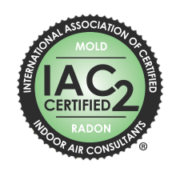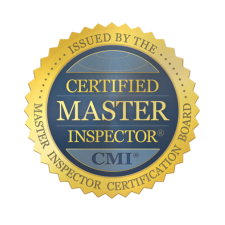Why Radon Testing is Important for Your Montana Home
You’re buying a new home in the Flathead Valley, and you can’t wait to get yourself and your family settled. Before you can start considering paint colors, though, you’ve got to do your due diligence and have a comprehensive home inspection. And, here in the Flathead Valley, one of the most important elements of any home inspection is radon testing.
Radon, a naturally occurring radioactive gas, is impossible to see or smell. Still, it’s a very common element, and it occurs in all 50 states. When radon makes its way into your home, though, it can become dangerous very quickly.
According to the Environmental Protection Agency, radon is the second leading cause of lung cancer in the US, second only to smoking.
In this post, we’ll discuss the dangers of radon, the importance of radon testing, and how you can ensure your home stays healthy and safe for everyone in it.
Let’s dive in.
What is Radon?
Radon is a naturally occurring gas that is produced by the natural breakdown of uranium in water, soil, and rocks. Uranium is naturally present in the earth’s crust, and does not have a color, odor, or taste. Unless you test for it, there’s no way to know whether it’s in your home or not.
That said, the Environmental Protection Agency (EPA) reports that nearly one out of every 15 homes in the US have an elevated radon level. In most of these homes, radon comes from the rock or soil beneath the building itself. It gets inside the building because air pressure within the home is usually lower than the pressure in the soil surrounding the building’s foundation.
This difference in pressure creates a vacuum which draws radon up from the soil and through tiny cracks in walls, floors, or gaps in the foundation. Once the radon gets into the home, it becomes trapped. Usually, radon levels are at their highest in the lower levels of the home, such as the basement or crawl space.
Today, most radon exposure takes place inside homes, workplaces, and schools, and this radon exposure takes a toll. Each year, 21,000 people in the US and EU die from radon-related lung cancer.
How Much Radon is Too Much?
Here’s what Mike Vogel, Extension Housing and Environmental Health Specialist at Montana State University has to say about ideal radon levels:
Radon is measured in picoCuries per liter of air (pCi/L). A picoCurie is one-trillionth of a Curie, which measures radioactivity in disintegrations per second. The EPA recommends radon levels be addressed in homes if the level is 4 pCi/L (picoCuries per liter) or more. Because there is no known safe level of exposure to radon, the EPA also recommends that homeowners consider the issue for radon levels between 2 pCi/L and 4 pCi/L.
3 Reasons Radon Testing Matters
Radon testing isn’t just “nice to have.” In fact, the EPA recommends radon testing for any home you are buying or selling. If you’re constructing a new home, the EPA also recommends investing in radon-resistant construction features. Here are a few reasons that radon testing is so important:
1. Radon is present in homes throughout the country
There’s no state in the US where radon does not exist. In fact, any home in any part of the country can have a radon problem, including new and old homes, well-insulated homes, drafty homes, and homes without basements or crawl spaces.
That said, have your home professionally radon tested during your home inspection. The home’s radon levels should be 4 pCi/L or less.
2. You can’t rely on your neighbor’s radon tests
Even if the surrounding households in your new neighborhood have had radon testing, you can’t use these tests to predict the radon level in your home. In fact, homes that are next to each other can have very different indoor radon levels. As such, testing is the only way to evaluate your home’s radon levels.
3. You can fix radon problems
If your home comes back with very high radon levels, you don’t have to abandon the deal. In fact, it is possible to fix radon problems even in homes with very high radon concentrations.
Today, there are a variety of radon reduction methods available to homeowners. Some of them can reduce radon levels by up to 99%. Some radon reduction techniques prevent radon from entering the home. Others focus on venting existing radon out of the building, where it is no longer harmful to people.
Different Types of Radon Testing
There are two types of radon tests: short- and long-term tests. According to the EPA:
There are two types of radon testing devices. Passive radon testing devices do not need power to function. These include charcoal canisters, alpha-track detectors, charcoal liquid scintillation devices, and electret ion chamber detectors. Both short- and long-term passive devices are generally inexpensive. Active radon testing devices require power to function and usually provide hourly readings and an average result for the test period. These include continuous radon monitors and continuous working level monitors, and these tests may cost more. A state or local official can explain the differences between the devices and recommend ones that are most appropriate for your needs and expected testing conditions. Make sure to use a radon testing device from a qualified laboratory.
Choosing the Right Team for Radon Testing
When you’re ready to test your home for radon, contact a skilled, qualified team of home inspectors, like 406 Home Inspection Pros. We specialize in offering radon and mold testing for homes in Whitefish, Kalispell, and the rest of the Flathead Valley. Our team will help protect your real estate investment and preserve the health and well-being of your family in your new space.
Contact us today to learn more or to schedule your radon testing today.







Thank you for explaining that your neighbors will have different results from you. I’ve been wondering if we need to be tested for radon. I hadn’t thought about this, so we’ll be sure to schedule some tests.
Hello Olivia
Thank you for your comment
Its at times baffling but true. I have indeed seen dramatic differences even from one side of a large building to the other side.